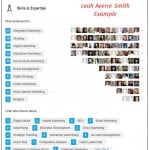Earlier this month, 8,000 people from around the world gathered in Chicago for DMA 2013, The Global Event for Data-Driven Marketers. The theme was Big Data. Bright Minds. Best Practice—and there were many great presentations about data, analytics, technologies and trends.
But the part I liked best was learning about the behavior behind the data.
Though our marketing is data-driven, our target markets are human. And while humans may be predictable, we’re also irrational. That point was made convincingly and entertainingly by Dan Ariely, the James B. Duke Professor of Psychology and Behavioral Economics at Duke University, and a keynote luncheon speaker.
Take this example of a subscription offer from The Economist. The response device offered three options:
[ ] Online-only subscription for $59
[ ] Print-only subscription for $125
[ ] Print AND online subscription for $125
Not surprisingly, the third option was the huge winner. After all, it was like getting the online subscription FREE.
But when the second option was removed, everything changed. Given the choice between the online-only subscription for $59 or the print-and-online subscription for $125, more than twice as many subscribers chose online only. This time, $125 didn’t look like such a great deal.
The lesson? When making choices, we compare them with other options nearby. The results above were driven less by the $125 subscription price itself than by the options around it.
More fascinating (if not surprising) human behaviors were shared throughout the 6-day conference. A few examples from other sessions I attended …
- We’re more likely to respond to “celebration-related” emails than to regular emails. (Consumers: 29% higher open rate; Businesses: 21% higher open rate). Email examples ranged from “Celebrate Memorial Day” in an email selling barbecue and outdoor equipment to “Celebrate the First Flush” in an email promoting “the ultimate potty training app.”
- We like to feel special. Email subject lines that include “Secret,” “Private,” “For CEOs Only” and other words that convey exclusivity generate a 26% higher open rate than those without.
- The more screens we have, the more time we spend on every digital device. Different devices play different roles throughout the day. On workdays we favor mobile devices in the early morning (commute) hours, PCs during working hours, and tablets at night.
- We prefer to check the weather on our smartphones and watch sports on our desktop, though sports content is growing across all platforms.
For me, as a creative director, it’s these human insights that make data-driven marketing so much fun—and the DMA conference so valuable. To learn more about the conference presentations, as well as our own thought leadership, call Anderson at 888.694.5094.





